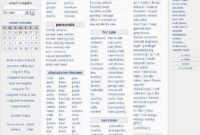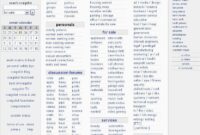Running Boards For Pickup Trucks: Your Ultimate Guide to Enhanced Access, Style, and Protection pickup.truckstrend.com
Pickup trucks are more than just vehicles; they’re workhorses, adventure companions, and often, extensions of our personal style. Their robust build, elevated stance, and formidable presence are part of their undeniable appeal. However, this very height, while advantageous for ground clearance and a commanding view, can pose a challenge for entry and exit, especially for shorter individuals, children, or those with mobility issues. This is where running boards come into play – an essential accessory that transforms the daily interaction with your truck, offering a seamless blend of practicality, protection, and aesthetic enhancement.
What Are Running Boards? A Deeper Dive
Running Boards For Pickup Trucks: Your Ultimate Guide to Enhanced Access, Style, and Protection
At their core, running boards are a step-like accessory mounted below the doors of a pickup truck (or SUV), extending along the length of the cab. Their primary function is to provide a sturdy, non-slip platform that makes stepping into and out of the elevated cabin significantly easier and safer.
Historically, running boards were a standard feature on early automobiles, designed to keep occupants’ feet clean from muddy roads before enclosed cabins became commonplace. While their primary role has evolved, their fundamental purpose of aiding entry and exit remains paramount. Modern running boards are sophisticated accessories, engineered for durability, style, and integration with the truck’s design. They are typically constructed from robust materials like aluminum, steel, or high-grade ABS plastic, often featuring textured surfaces or rubberized inserts to maximize grip, even in wet or icy conditions.
Beyond Access: The Multifaceted Benefits of Running Boards
While easing entry and exit is their most obvious benefit, running boards offer a surprisingly wide array of advantages that make them a worthwhile investment for any pickup truck owner.
1. Improved Accessibility and Safety
This is the cornerstone benefit. For families, older adults, or anyone who frequently enters and exits a tall truck, running boards provide a much-needed intermediate step. This reduces the strain on knees and hips, minimizes the risk of slips and falls, and makes the truck more accessible for everyone. Many running boards also feature integrated LED lighting, illuminating the step at night for added safety.
2. Vehicle Protection
Running boards act as a protective barrier for your truck’s lower body. They can deflect road debris, rocks, and mud kicked up by the tires, preventing chips and scratches to your paintwork. They also offer a degree of protection against minor door dings from adjacent vehicles in parking lots, absorbing impact before it reaches your truck’s doors.
:max_bytes(150000):strip_icc()/runninghills-56a8151f3df78cf7729bf653.jpg)
3. Enhanced Aesthetics and Customization
Running boards significantly alter the visual profile of a pickup truck. They can bridge the gap between the wheels, creating a more cohesive and finished look. Available in various finishes – from sleek chrome and matte black to rugged textured coatings – they allow owners to personalize their truck’s appearance, making it look more aggressive, luxurious, or off-road ready, depending on the chosen style.
4. Resale Value
A well-maintained truck with high-quality running boards can be more appealing to potential buyers. They are often perceived as a desirable upgrade that adds both functionality and style, potentially contributing to a higher resale value or quicker sale.
Types of Running Boards: Finding Your Perfect Match

The market offers a diverse range of running boards, each with unique characteristics catering to different needs, styles, and budgets. Understanding the distinctions is key to making an informed choice.
1. Traditional Running Boards
These are typically wide, flat platforms that run the length of the cab. They offer a large stepping surface and often come with a non-slip tread. Materials vary from aluminum (lightweight, corrosion-resistant) to steel (heavy-duty, strong) and sometimes ABS plastic. They are a popular choice for their classic look and broad utility.
2. Nerf Bars
Despite their name, nerf bars serve the same purpose as running boards. They are characterized by their tubular design, often round or oval, and come in various diameters. Nerf bars typically feature individual step pads at each door. They are popular among off-road enthusiasts for their rugged appearance and robust construction, often made from heavy-gauge steel.

3. Power/Retractable Running Boards
These are the epitome of convenience and luxury. Power running boards automatically extend when the truck doors open and retract flush with the vehicle’s body when the doors close. This keeps them out of sight, maintains ground clearance when not in use, and protects them from road debris. While they are the most expensive option, their seamless operation and sleek aesthetics are highly desirable.
4. Hoop Steps / Wheel-to-Wheel Steps
Hoop steps are individual, often circular or rectangular, steps that bolt directly to the truck’s frame, typically one per door. They offer a minimalist look. Wheel-to-wheel steps, on the other hand, combine the functionality of a running board with an integrated step at the front of the bed, providing easier access to the truck bed or toolboxes.
Choosing the Right Running Boards for Your Pickup
Selecting the ideal running boards involves considering several factors to ensure they meet your specific needs and complement your truck.
1. Vehicle Compatibility
This is paramount. Running boards are vehicle-specific. Ensure the product is designed for your truck’s exact make, model, year, and cab configuration (e.g., Crew Cab, Extended Cab, Regular Cab). Universal running boards are rare and often require extensive modification.
2. Primary Purpose
Are you prioritizing easy access, maximum protection, or a specific aesthetic? If off-roading is a priority, consider durable steel nerf bars that can withstand impacts. For families, wide, non-slip traditional running boards or power steps might be best.
3. Material and Durability
- Aluminum: Lightweight, excellent corrosion resistance, good for everyday use.
- Steel (Mild or Stainless): Heaviest duty, strongest, best for impact resistance. Stainless steel offers superior corrosion resistance compared to mild steel (which usually needs a powder coat).
- ABS Plastic: Often used as a cap or tread surface over a metal frame. Lightweight, but less durable on its own.
4. Installation Method
Most modern running boards are designed for "no-drill" installation, utilizing existing mounting points on your truck’s frame. However, some older models or heavy-duty options may require drilling. Always check the installation requirements before purchasing.
5. Budget
Prices vary significantly based on material, type, and brand. Set a realistic budget and explore options within that range. Remember to factor in potential installation costs if you don’t plan to DIY.
6. Style Preference
Consider how the running boards will integrate with your truck’s overall look. Do you prefer a sleek, integrated appearance, or a more rugged, exposed design? Finishes like chrome, black powder coat, or polished stainless steel offer different visual appeals.
Installation Guide: Getting Your Running Boards On
Installing running boards can be a straightforward DIY project for many, especially with "no-drill" kits. However, understanding the process is key.
DIY vs. Professional Installation
- DIY: If you’re comfortable with basic hand tools, can follow instructions, and have a safe, level workspace, installing bolt-on running boards is achievable. Most kits come with all necessary hardware and detailed instructions. Allow 1-3 hours, depending on your experience and the specific product.
- Professional: For power running boards, or if you prefer not to tackle the job yourself, professional installation by an automotive accessory shop or dealership is recommended. They have the specialized tools, lifts, and expertise to ensure a secure and correct fit.
General Installation Steps (for bolt-on kits):
- Gather Tools: You’ll typically need a ratchet set, wrenches, and possibly a torque wrench.
- Safety First: Park your truck on a level surface, engage the parking brake, and wear appropriate safety gear.
- Identify Mounting Points: Most trucks have pre-drilled holes or threaded inserts on the frame or rocker panels.
- Attach Brackets: Secure the mounting brackets to the identified points on your truck’s frame using the provided hardware. Do not fully tighten yet.
- Mount Running Boards: Lift the running board onto the brackets and loosely secure it.
- Adjust and Align: Slide the running board along the brackets to achieve the desired position relative to your doors. Ensure it’s level and evenly spaced.
- Tighten All Hardware: Once satisfied with the alignment, fully tighten all bolts to the manufacturer’s specified torque settings.
- Repeat: Follow the same process for the other side of the truck.
Maintenance Tips:
Regular cleaning is essential to prevent dirt and salt buildup, which can lead to corrosion. Use mild soap and water, and periodically check all mounting bolts for tightness. For power steps, ensure the moving parts are free of debris and lubricate as recommended by the manufacturer.
Common Challenges and Solutions
While generally robust, running boards can encounter a few issues over time.
- Rust and Corrosion: Especially prevalent in areas with road salt or high humidity. Solution: Choose rust-resistant materials (aluminum, stainless steel) or regularly clean and inspect painted steel boards, touching up any chips.
- Slippage: The non-slip surface can wear down or become dirty. Solution: Regular cleaning, or consider adding aftermarket non-slip tape if the original tread wears out.
- Reduced Ground Clearance: Some running boards, particularly wide ones, can slightly reduce ground clearance, which might be an issue for serious off-roaders. Solution: Opt for higher-tucked nerf bars or power steps that retract when not in use.
- Noise/Vibration: Loosely installed running boards can rattle. Solution: Re-tighten all mounting hardware and ensure no components are rubbing against the truck body.
Running Boards For Pickup Trucks: Price Guide
Providing exact prices is challenging due to brand variations, materials, and fluctuating market conditions. However, here’s a general price range guide to help you budget for running boards. These prices typically cover a set for both sides of a pickup truck.
| Type of Running Board | Material | Price Range (Parts Only) | Estimated Installation Cost (Professional) | Key Considerations |
|---|---|---|---|---|
| Traditional Running Boards | Aluminum | $200 – $600 | $100 – $250 | Wide stepping surface, corrosion-resistant, good all-rounder. |
| Mild Steel (Coated) | $180 – $550 | $100 – $250 | Durable, often more affordable, but coating is key for rust prevention. | |
| Nerf Bars | Mild Steel (Coated) | $150 – $500 | $100 – $250 | Tubular design, rugged look, individual step pads, strong. |
| Stainless Steel | $300 – $800 | $100 – $250 | Superior corrosion resistance, polished look, premium option. | |
| Power/Retractable Steps | Aluminum/Steel | $1,000 – $2,000+ | $300 – $600+ | Automatic deployment, sleek when retracted, preserves ground clearance, luxury option. |
| Hoop Steps (Set) | Steel | $100 – $300 | $80 – $200 | Minimalist, individual steps, basic access aid. |
| Wheel-to-Wheel Steps | Steel/Aluminum | $300 – $900 | $150 – $350 | Extends to bed for cargo access, combines step and bed access, more utilitarian. |
Note: Prices are estimates and can vary significantly based on brand, specific vehicle fitment, features (e.g., integrated lighting), and regional labor rates.
Frequently Asked Questions (FAQ)
Q1: Are running boards universal?
No, running boards are generally vehicle-specific. They are designed to fit the exact make, model, year, and cab configuration (e.g., Crew Cab, Extended Cab) of a truck, utilizing specific mounting points on the frame. Always verify compatibility before purchasing.
Q2: How long do running boards last?
The lifespan of running boards varies greatly depending on the material, climate, usage, and maintenance. High-quality aluminum or stainless steel running boards can last for 10-15 years or even the lifetime of the truck if properly maintained. Powder-coated steel might last 5-10 years before showing signs of wear or rust if the coating is compromised.
Q3: Do running boards affect fuel economy?
The impact on fuel economy is generally negligible for most running boards. While they add a small amount of weight and can slightly alter aerodynamics, the effect is usually too small to be noticeable in daily driving. Power retractable steps, which tuck away, would have even less impact.
Q4: Can I install running boards myself?
Yes, many bolt-on running board kits are designed for DIY installation and come with all necessary hardware and instructions. You’ll typically need basic hand tools. However, power-retractable steps often involve electrical wiring and are usually best left to professional installers.
Q5: What’s the difference between running boards and nerf bars?
Both serve as steps to aid vehicle entry/exit. The primary difference is their design:
- Running Boards: Typically have a wider, flat, board-like surface.
- Nerf Bars: Have a round or oval tubular design, often with individual step pads. Nerf bars are sometimes favored for their rugged look and off-road protection.
Q6: Do running boards reduce ground clearance?
Yes, running boards, by definition, extend downwards from the truck’s body and will slightly reduce ground clearance. The extent depends on their design and how high they tuck up against the rocker panel. If maximizing ground clearance for serious off-roading is a concern, consider higher-tucked nerf bars or power-retractable steps that disappear when not in use.
Conclusion
Running boards for pickup trucks are far more than just an accessory; they are a practical upgrade that significantly enhances the daily usability, safety, and aesthetic appeal of your vehicle. From providing a stable step for easy entry and exit to offering crucial protection against road debris and door dings, their benefits are multifaceted. With a wide array of types, materials, and styles available, there’s a perfect running board solution for every truck owner, regardless of their priorities or budget. By carefully considering your needs and making an informed choice, you can transform your pickup, making it more accessible, more protected, and undeniably more stylish, ultimately elevating your entire truck ownership experience.



